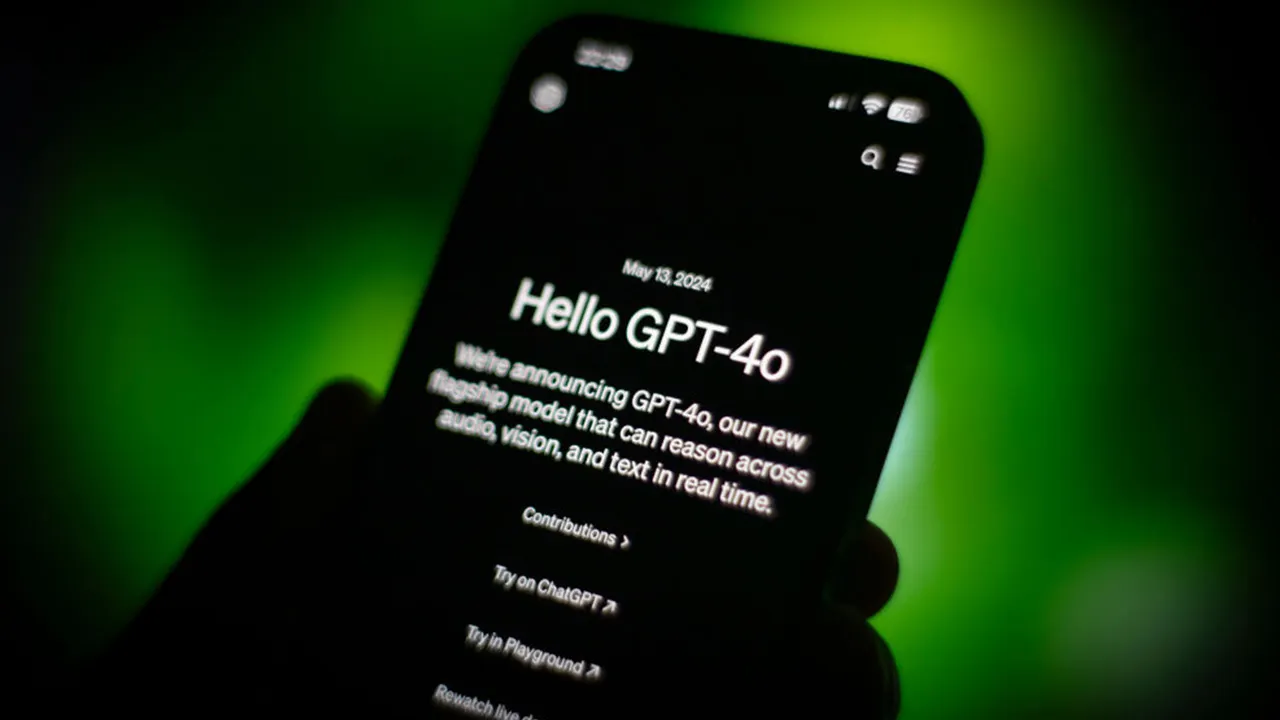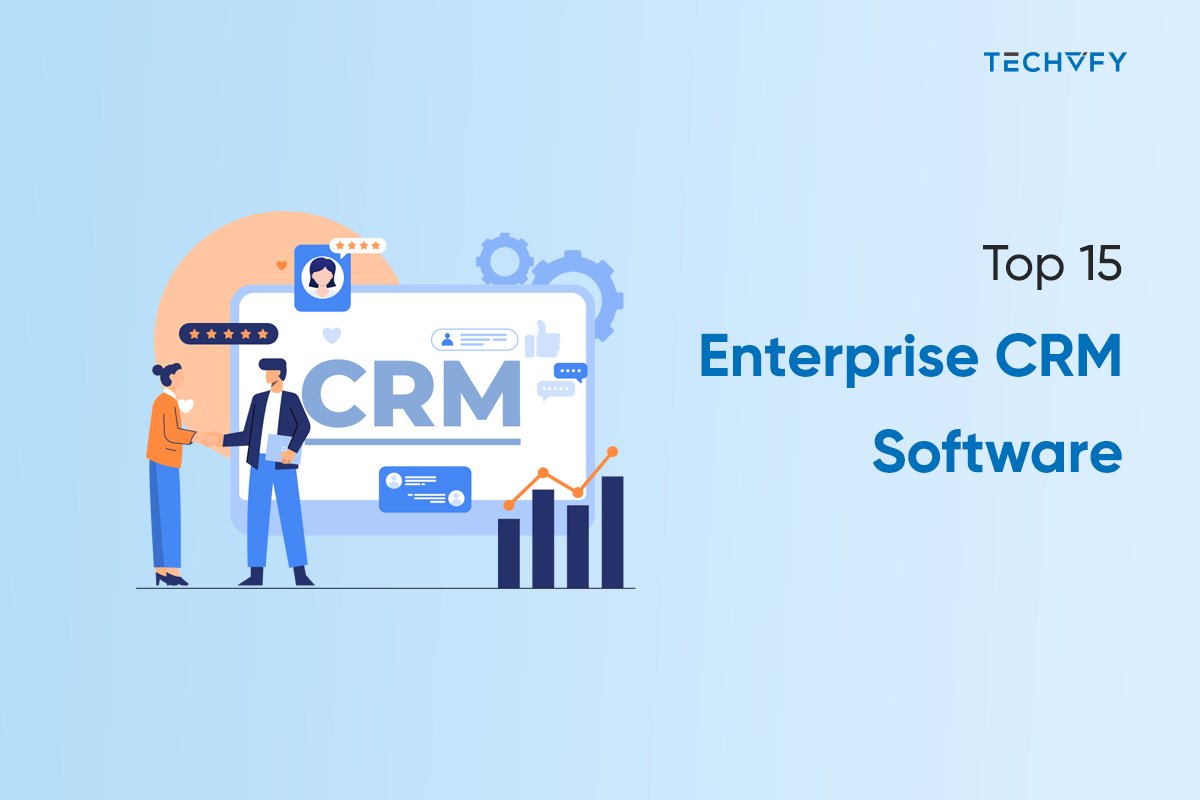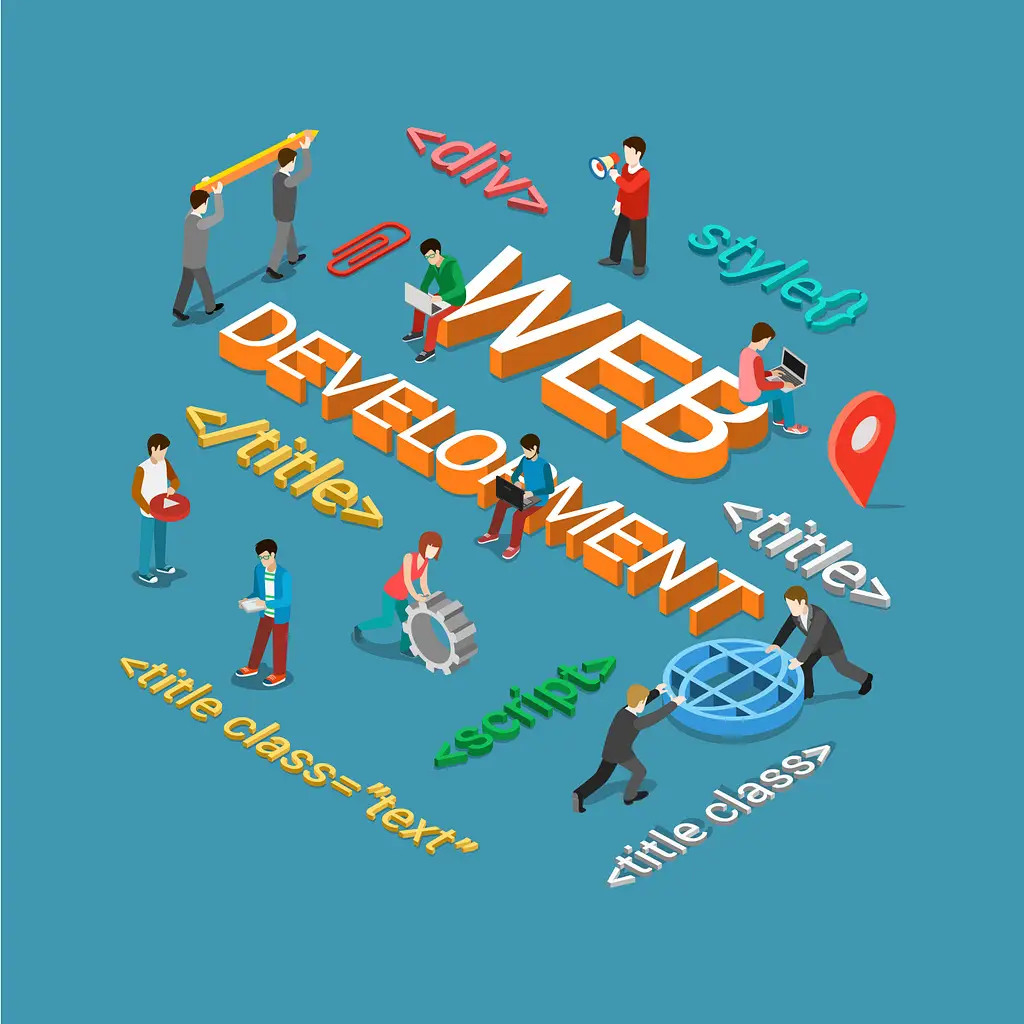Top 20 AI Development Frameworks & Libraries in 2024


In the current era of swift technological advancement, Artificial Intelligence (AI) has become a cornerstone of software development. AI equips programs with the ability to execute tasks traditionally attributed to human intelligence, including comprehending and crafting human language, discerning intricate patterns within datasets, and executing sophisticated decision-making processes.
For software professionals and business leaders seeking to leverage AI’s capabilities, the critical question arises: which tools are best suited for the job? This guide from TECHVIFY is designed to provide clarity, offering insights into the selection of AI frameworks and libraries, along with other critical considerations for the proficient technical user.
Before going into detail, here are some interesting statistics about AI in recent years:
AI frameworks serve as the foundational elements necessary for the construction of advanced, intelligent systems capable of learning, adapting, and evolving. An AI framework can also be described as an integrated suite of libraries designed to facilitate the development and deployment of AI algorithms.
These frameworks enhance the efficiency of algorithm development and deployment through their pre-configured functions and libraries, enabling developers to tailor AI models to particular tasks without the need to create the underlying architecture from the ground up.
The standardization of the development workflow is a key benefit of these frameworks. It ensures that, regardless of the specific AI initiative, developers have access to a consistent toolkit and methodologies. This consistency allows for the seamless incorporation of AI features into a variety of platforms and applications.
Take TensorFlow as an example; its comprehensive libraries significantly cut down on development time — a decisive advantage that contributes to its broad utilization in numerous sectors.
Looking To Integrate AI-Powered Solutions?
Get in touch with TECHVIFY AI’s experts for a free consultation. We’ll help you decide on next steps, explain how the development process is organized, and provide you with a free project estimate.
In the realm of software development, the increasing reliance on AI frameworks and libraries is a testament to their efficacy in conserving financial resources, time, and developmental manpower for AI-infused software initiatives. AI frameworks and libraries are essentially an assemblage of pre-configured instruments and materials that streamline the construction of AI-driven applications. These frameworks lay the groundwork for the application of machine learning and deep learning algorithms, thereby simplifying the task of crafting intelligent systems.
Let us delve into the reasons for the widespread adoption of AI frameworks in enhancing the software development workflow.
AI frameworks offer a cost-efficient avenue for organizations to develop bespoke software applications. By bypassing the need for extensive manual coding and providing developers with ready-to-use components, frameworks play a pivotal role in diminishing development expenditures. Frameworks empower businesses to expediently construct complex applications specifically tuned to their unique requirements. Through the utilization of AI and machine learning capabilities, enterprises are able to forge software solutions that outstrip the efficiency of conventional development practices.
In the selection of frameworks, their capacity to refine and expedite the development process is paramount. Equipped with pre-coded algorithms, data management utilities, and optimization strategies, these frameworks liberate developers to concentrate on the core problem-solving aspect instead of being mired in the intricacies of AI mechanics.
AI frameworks represent a significant boon for contemporary software development, expediting the creation, evaluation, and deployment of applications. They provide a comprehensive developmental ecosystem complete with debugging aids, testing frameworks, and data visualization tools. This accelerates the development timeline, allowing developers to swiftly advance without the tedium of individual code compilation and analysis. Moreover, AI frameworks present an extensive selection of pre-developed models.
These benefits are among the primary motivations for integrating AI at the nascent stages of software development within enterprises. Next, we will explore the essential considerations in selecting an AI framework for a tech project.
In the quest to choose an AI framework, certain critical elements must be weighed to guarantee a match with the specific needs of your project and the proficiency you bring to the table.
Prioritizing performance is crucial when sifting through potential frameworks. You should lean towards a framework capable of managing data with high efficiency and offering swift training and inference capabilities. To gauge the performance prowess of various frameworks, it’s advisable to review benchmarks and analyze use cases in real-world scenarios.
The presence of a vibrant and responsive community is indispensable in the realm of AI framework development. Such a community provides unfettered access to a wealth of resources, instructional content, and user-contributed add-ons, as well as steadfast assistance for the roll-out of continual enhancements and version updates of the framework.
Flexibility becomes a paramount factor in AI project endeavors. Selecting an AI framework that allows for the exploration of diverse algorithms is critical for project success. Moreover, the chosen framework should demonstrate versatility in handling various data modalities, including text, imagery, and audio, and offer seamless integration with other technological stacks, thereby ensuring that AI projects are executed with precision and efficiency.
For those embarking on the AI journey, it is imperative to opt for a framework that complements your level of expertise, especially for novices. Focus on frameworks known for their user-friendliness, replete with comprehensive documentation and instructional guides. Furthermore, take into account your preferred learning approach and the resources at your disposal to facilitate a smooth learning experience.
In the process of AI framework selection, it is vital to meticulously consider aspects such as performance, community involvement, adaptability, and the learning curve. Such due diligence ensures the framework not only aligns with your project’s ambitions but also resonates with your technical capabilities. Factoring in these considerations will aid you in pinpointing the framework best suited for your data-driven ventures.
In the digital age, AI frameworks and libraries are pivotal for refining business operations. Leveraging software, organizations can automate functions, diminish manual efforts, enhance precision, conserve time and resources, extract insights from sizable datasets, and much more.
Leading AI frameworks, including TensorFlow and PyTorch, stand at the forefront of machine learning model development. These frameworks offer an extensive toolkit for developers, facilitating the creation and deployment of ML models with relative ease. Additionally, AI libraries such as Scikit-Learn, Keras, and Caffe present developers with API sets that accelerate application development, bypassing the need to craft a full code base from zero.
If you’re diving into the world of machine learning, TensorFlow is like the Swiss Army knife you’ll want in your toolkit. Developed by the clever folks at Google, it’s a powerhouse for numerical computation and large-scale machine learning models. Whether you’re training a massive neural network to recognize photos or you’re just starting out, TensorFlow’s flexibility means it grows with your projects.
Think of PyTorch as your friendly neighborhood machine learning library. It’s perfect for those times when you need to tinker with your neural network models on the fly. Born from the Torch library and now championed by Facebook, PyTorch is making a name for itself with researchers and developers who love its flexibility.
OpenAI has become a household name in the AI community, especially known for its impressive GPT language models. This organization not only develops cutting-edge AI research but also makes its models available through easy-to-use APIs, bringing powerful language understanding capabilities to the masses.
Looking for an AI Development Company?
As the Leading AI Development Company in Vietnam, TECHVIFY is the best option for you. Book a free consultation to get an accurate time and cost estimation for your project.
Now, for those who are just stepping into the machine learning arena, meet Scikit-Learn. This Python library is like the friendly guide that takes you by the hand and introduces you to the world of data analysis. It’s straightforward, user-friendly, and you’ll be up and running in no time.
Hugging Face is almost synonymous with the Transformers library, a collection of pre-trained models that are the bread and butter of modern natural language processing. It’s not just about text, though; Hugging Face has expanded to encompass tools for audio and image processing as well, making it a one-stop-shop for AI developers.
Keras is the go-to framework for many deep learning enthusiasts. It’s built with the idea of making the creation of neural networks as trouble-free as possible. Sitting on top of heavyweight platforms like TensorFlow, it offers a simpler, more intuitive interface that’s a dream for beginners. Think of Keras as the friendly guide in the complex world of neural networks.
OpenNN is a software library written in C++ for advanced analytics. It’s designed for researchers and developers who need a fast and robust platform to develop neural networks. The focus on performance and speed makes OpenNN a strong candidate for projects where computing efficiency is crucial.
PyBrain is for those who want to jump into machine learning without getting overwhelmed. It’s an easy-to-pick-up library for Python that’s particularly well-suited for people who are still learning or want to prototype quickly.
MXNet stands out for its balance of efficiency and scalability, making it a solid choice for both research and production in the field of deep learning.
IBM Watson stands as a pillar in the realm of enterprise AI, offering a comprehensive suite of AI services and tools for businesses. It’s a powerhouse for applications that demand reliable and scalable AI solutions, with a strong focus on user engagement and industry-specific needs.
The Microsoft Cognitive Toolkit, also known as CNTK, is a robust and scalable deep learning framework. It’s designed to handle the rigorous demands of research while also being capable enough for the production deployment of AI models.
Deeplearning4j, or DL4J, is the go-to deep learning library for the Java and Scala ecosystems. It brings the power of neural networks to the enterprise Java space, allowing developers to introduce AI capabilities into their applications.
LangChain is making waves as a newer kid on the block for developers working with large language models. It’s all about enabling you to create complex applications that leverage the power of language understanding. With LangChain, you can piece together the components of a language model like building blocks to craft something tailored to your needs.
XGBoost has become a staple in the toolbox of data scientists, especially for its efficiency and performance in structured data and traditional machine learning tasks.
Theano was once a trailblazer in the AI community—a Python library that allowed for efficient symbolic mathematics and was instrumental in building the foundation of deep learning frameworks we see today.
Caffe is recognized for its exceptional performance in the domain of computer vision and for its deployment capabilities on edge devices.
Fast.ai is a research group with the aim of making deep learning more accessible, built on top of PyTorch. It provides high-level components that can quickly get you started on deep learning projects, yet it’s flexible enough to implement cutting-edge research.
Chainer emerges as a pioneering open-source deep learning framework, ingeniously crafted in Python and underpinned by the powerful linear algebra libraries NumPy and CuPy. Developed through a collaborative synergy with tech giants such as IBM, Intel, Microsoft, and Nvidia, Chainer introduces an innovative “define by run” architecture, echoing the dynamic nature of PyTorch.
JAX forges paths in high-performance machine learning research. It enhances the familiar NumPy interface for linear algebra computations with the prowess of just-in-time compilation for CPUs, GPUs, and TPUs alike. JAX’s support for automatic differentiation stands as a testament to its integral role in the training of neural networks.
vmap), and parallelization (pmap).ONNX stands as a cornerstone in the AI model deployment landscape by offering a shared model representation for interoperability and innovation in the AI framework space.
ONNX’s role is critical for teams that need to collaborate across different frameworks and for businesses that require deploying models in diverse production scenarios. It bridges the gap between model development and deployment, ensuring that AI applications can be as versatile and efficient as possible.
In the grand performance of AI development, PyTorch dazzles with flexibility and TensorFlow stands strong with its scale. Scikit-Learn is the reliable old friend for machine learning classics, and Keras is the easy-going guide for deep learning beginners. XGBoost tackles structured data with finesse, Caffe is the go-to for vision tasks, and MXNet scales with ease.
Though Theano has bowed out, its legacy lives on. The new kids on the block, LangChain and OpenAI’s LLMs, bring fresh moves to the LLM scene, with Hugging Face offering a suite of NLP wonders.
Choosing the right AI framework or library is like selecting the perfect music for your dance routine — it has to resonate with your style and amplify your performance. So lace up your dancing shoes, step into the AI ballroom, and let your creativity spin into action with the toolkit that makes your code sing. Let’s dance towards a future woven with smarter, more intuitive software!
When choosing an AI framework, open-source options like PyTorch and TensorFlow offer cost-effectiveness, community support, and full code transparency but may lack the dedicated support and simplicity of commercial alternatives. Commercial frameworks provide robust support and user-friendly interfaces, along with advanced features, but can come with higher costs and potential vendor lock-in. Your decision should hinge on your project's specific needs, budget constraints, and desired level of control and support.
Embracing an AI framework is like giving your software development a supercharge! Think of these frameworks as a treasure trove of pre-built gadgets and gizmos that make crafting AI-infused applications a breeze. They're the secret sauce in slashing costs, zipping through development timelines, and smoothing out the app creation journey.
With a toolbox full of ready-to-roll algorithms, data wranglers, and nifty optimization tricks, developers can leap over the technical hurdles and sprint straight to innovation. Time is money, and with AI frameworks, you're saving buckets of both, transforming complex coding marathons into a walk in the park.
TECHVIFY – Global AI & Software Solutions Company
For MVPs and Market Leaders: TECHVIFY prioritizes results, not just deliverables. Reduce time to market & see ROI early with high-performing Teams & Software Solutions.


Table of Contents1. What is AI Framework?2. Why Choose an AI Framework?Cost Savings for Tech EnterprisesStreamlining the Application Development ProcessA Boon for Time Management3. So, How to Choose an AI Framework That Fits Your Business NeedsEvaluating PerformanceThe Significance of Community SupportThe Necessity for FlexibilityEase of Learning Curve4. Top 20 AI Development Frameworks4.1. TensorFlow4.2. PyTorch4.3. OpenAI4.4. Scikit-Learn4.5. Hugging Face4.6. Keras4.7. OpenNN4.8. PyBrain4.9. MXNet4.10. IBM Watson4.11. Microsoft Cognitive Toolkit (CNTK)4.12. DL4J (Deeplearning4j)4.13. LangChain4.14. XGBoost4.15. Theano4.16. Caffe4.17. Fast.ai4.18. Chainer4.19. JAX4.20. ONNX (Open Neural Network Exchange)ConclusionOpen-Source vs. Commercial AI FrameworksAre AI Frameworks Must-Have? GPT-4o is OpenAI’s third major iteration of their large multimodal model,…
17 May, 2024

Table of Contents1. What is AI Framework?2. Why Choose an AI Framework?Cost Savings for Tech EnterprisesStreamlining the Application Development ProcessA Boon for Time Management3. So, How to Choose an AI Framework That Fits Your Business NeedsEvaluating PerformanceThe Significance of Community SupportThe Necessity for FlexibilityEase of Learning Curve4. Top 20 AI Development Frameworks4.1. TensorFlow4.2. PyTorch4.3. OpenAI4.4. Scikit-Learn4.5. Hugging Face4.6. Keras4.7. OpenNN4.8. PyBrain4.9. MXNet4.10. IBM Watson4.11. Microsoft Cognitive Toolkit (CNTK)4.12. DL4J (Deeplearning4j)4.13. LangChain4.14. XGBoost4.15. Theano4.16. Caffe4.17. Fast.ai4.18. Chainer4.19. JAX4.20. ONNX (Open Neural Network Exchange)ConclusionOpen-Source vs. Commercial AI FrameworksAre AI Frameworks Must-Have? Ask any leader of an enterprise-level company what’s most important, and…
16 May, 2024

Table of Contents1. What is AI Framework?2. Why Choose an AI Framework?Cost Savings for Tech EnterprisesStreamlining the Application Development ProcessA Boon for Time Management3. So, How to Choose an AI Framework That Fits Your Business NeedsEvaluating PerformanceThe Significance of Community SupportThe Necessity for FlexibilityEase of Learning Curve4. Top 20 AI Development Frameworks4.1. TensorFlow4.2. PyTorch4.3. OpenAI4.4. Scikit-Learn4.5. Hugging Face4.6. Keras4.7. OpenNN4.8. PyBrain4.9. MXNet4.10. IBM Watson4.11. Microsoft Cognitive Toolkit (CNTK)4.12. DL4J (Deeplearning4j)4.13. LangChain4.14. XGBoost4.15. Theano4.16. Caffe4.17. Fast.ai4.18. Chainer4.19. JAX4.20. ONNX (Open Neural Network Exchange)ConclusionOpen-Source vs. Commercial AI FrameworksAre AI Frameworks Must-Have? A well-functioning web product is essential for startups. It can be…
15 May, 2024


Thank you for your interest in TECHVIFY Software.
Speed-up your projects with high skilled software engineers and developers.
By clicking the Submit button, I confirm that I have read and agree to our Privacy Policy